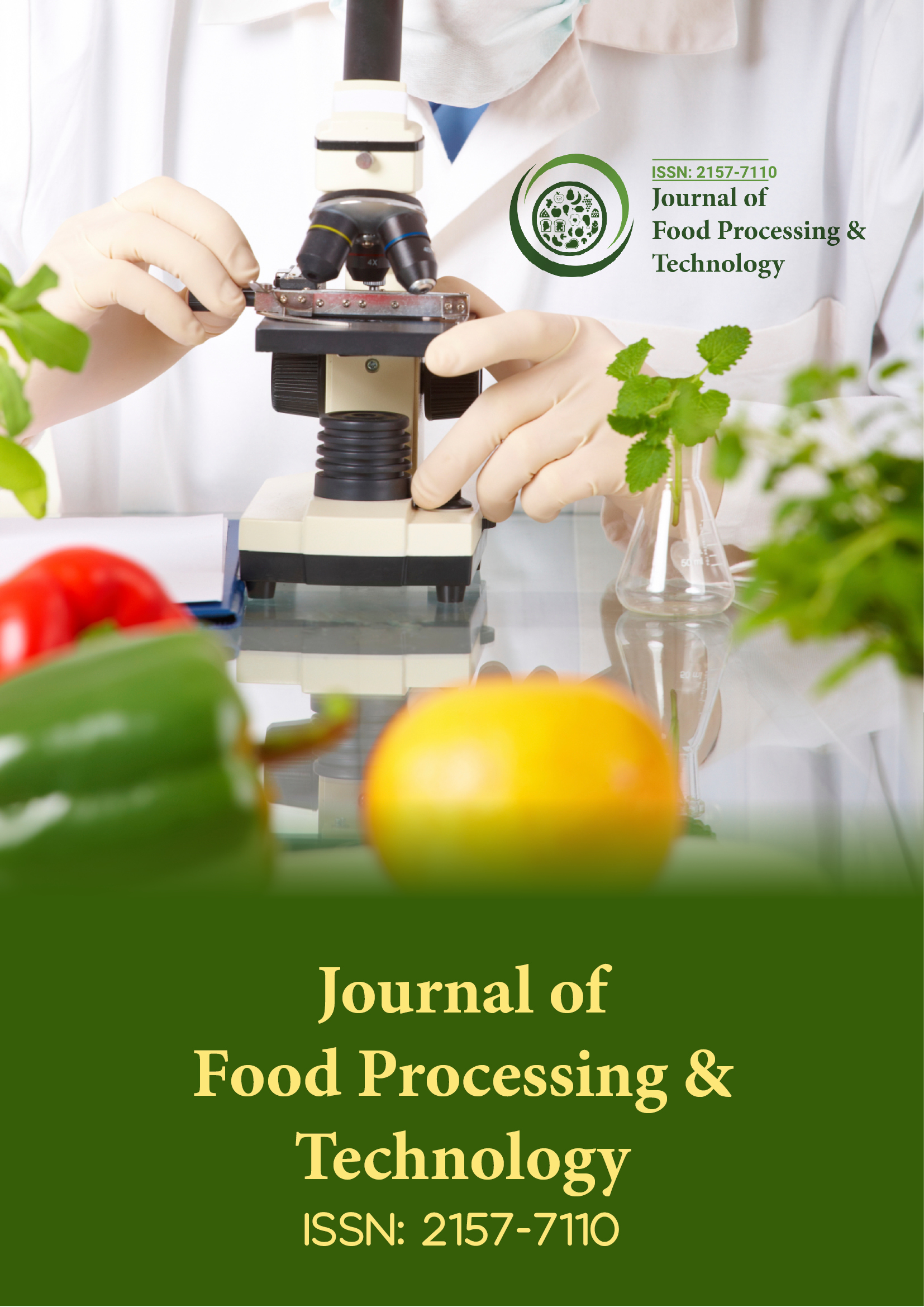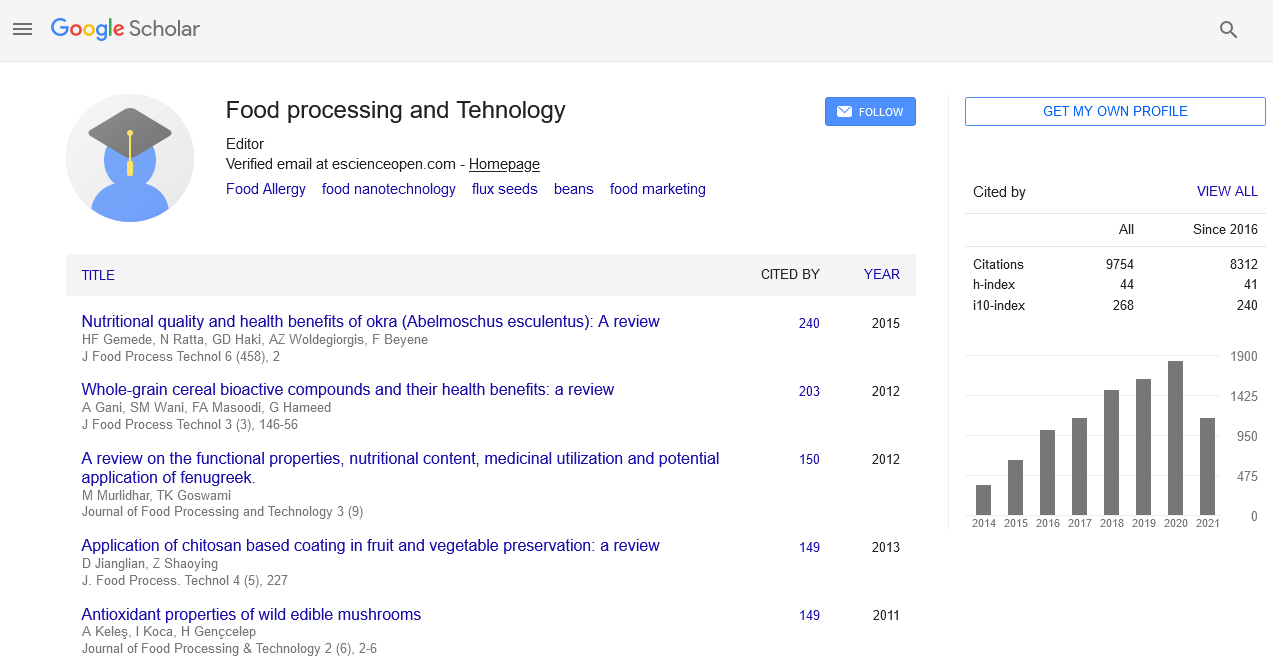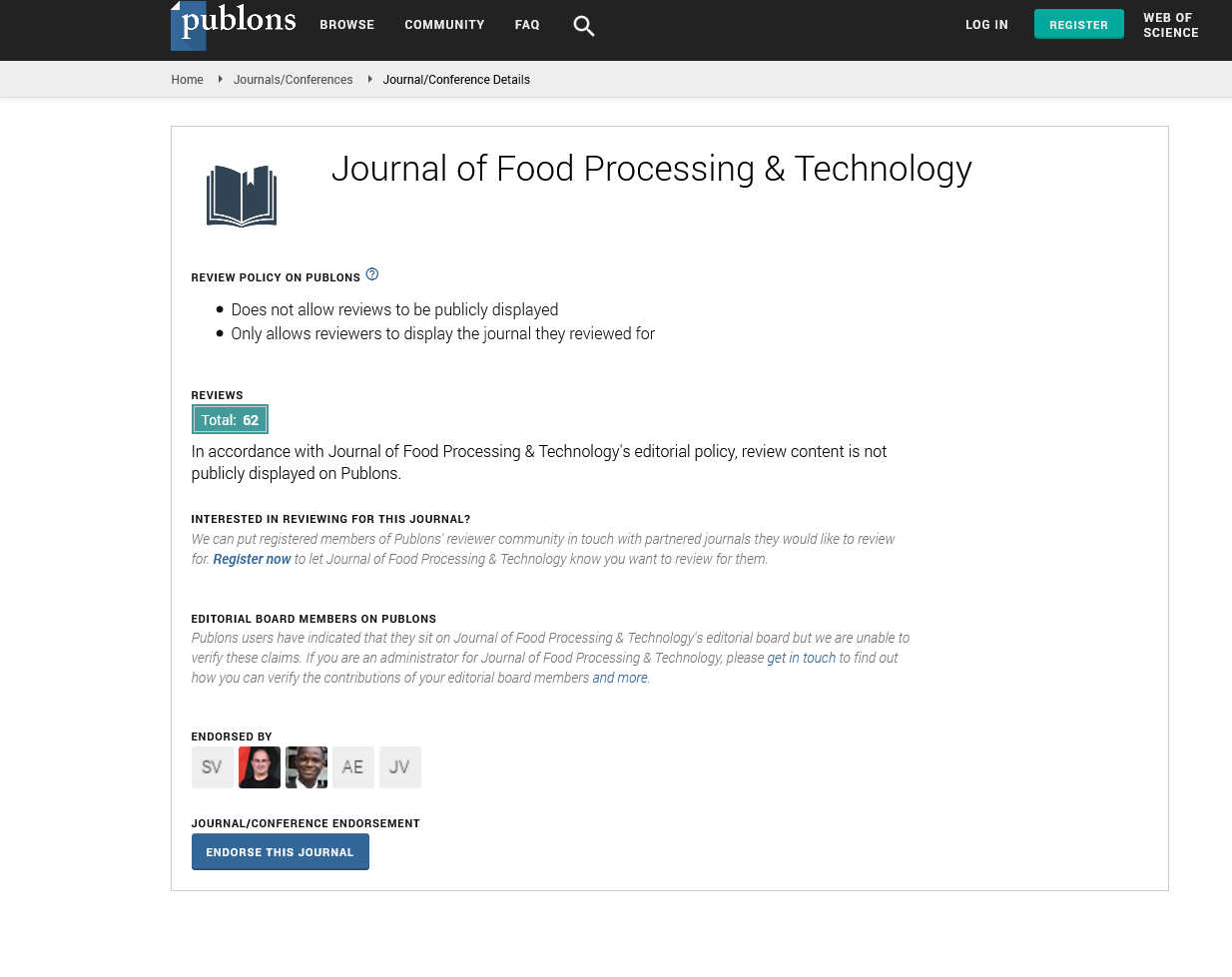Indexed In
- Genamics JournalSeek
- Academic Keys
- JournalTOCs
- China National Knowledge Infrastructure (CNKI)
- Access to Global Online Research in Agriculture (AGORA)
- Centre for Agriculture and Biosciences International (CABI)
- RefSeek
- Directory of Research Journal Indexing (DRJI)
- Hamdard University
- EBSCO A-Z
- OCLC- WorldCat
- Scholarsteer
- SWB online catalog
- Publons
- Euro Pub
- Google Scholar
Useful Links
Share This Page
Journal Flyer

Open Access Journals
- Agri and Aquaculture
- Biochemistry
- Bioinformatics & Systems Biology
- Business & Management
- Chemistry
- Clinical Sciences
- Engineering
- Food & Nutrition
- General Science
- Genetics & Molecular Biology
- Immunology & Microbiology
- Medical Sciences
- Neuroscience & Psychology
- Nursing & Health Care
- Pharmaceutical Sciences
Perspective - (2025) Volume 16, Issue 3
Improving Nutritional Value of Bread Through Biofortification Strategies
Isabella Rossi*Received: 26-May-2025, Manuscript No. JFPT-25-29654; Editor assigned: 28-May-2025, Pre QC No. JFPT-25-29654; Reviewed: 11-Jun-2025, QC No. JFPT-25-29654; Revised: 19-Jun-2025, Manuscript No. JFPT-25-29654; Published: 25-Jun-2025, DOI: 10.35248/2157-7110.25.16.1162
Description
Bread has been part of human diets for thousands of years, serving as one of the most common foods across cultures. It provides energy and satiety, making it a staple in both developed and developing nations. However, the white or refined wheat bread that dominates modern markets is often low in essential nutrients. Many consumers unknowingly rely on it as a daily source of calories without realizing that it contributes little to meeting the body’s needs for vitamins and minerals. The growing concern about hidden hunger where people eat enough but remain deficient in vital nutrients has motivated scientists and food technologists to improve the nutritional quality of this everyday product. One effective way to enrich bread is through biofortification, a process aimed at increasing the content of beneficial nutrients during crop cultivation or food processing. Unlike traditional fortification, where nutrients are added after production, biofortification seeks to enhance the nutritional composition of raw materials or use biological techniques to improve nutrient absorption. This approach is increasingly recognized as a sustainable method to tackle malnutrition, especially in populations that rely heavily on cereal-based diets.
A common method involves blending wheat flour with other flours obtained from nutrient-dense grains or pseudocereals. Mixing wheat with flours from millet, sorghum, quinoa, or amaranth adds minerals such as iron, calcium, magnesium and zinc while increasing dietary fiber and protein quality. For instance, quinoa and amaranth are rich in lysine, an essential amino acid that wheat lacks. The result is a loaf that offers more balanced nutrition. These grains are also known for their ability to grow in harsh conditions, requiring less water and chemical inputs, which supports sustainable agriculture. However, it is important to manage their proportion in the blend, as excessive substitution can alter texture, color, or flavor. Researchers are refining flour ratios to achieve both nutritional improvement and consumer appeal. Another natural way to improve the nutritional quality of bread is fermentation using selected microorganisms. Certain bacteria and yeasts not only contribute to the texture and flavor but also enhance the bioavailability of minerals and vitamins. During fermentation, these microorganisms can reduce compounds known as antinutrients, such as phytates, which otherwise block the absorption of iron and zinc in the human digestive system. Moreover, some lactic acid bacteria strains can produce vitamins like folate, enriching the bread during dough preparation. This biological approach is particularly valuable for regions where bread forms a large part of the daily diet and micronutrient deficiencies are widespread.
Enzymes are also gaining attention for their role in improving nutrient availability. Phytase, for example, can be added to dough to break down phytates and release minerals for easier absorption. The use of such enzymes not only increases nutritional value but also maintains dough stability and baking performance. This method integrates seamlessly into existing bread-making processes, making it practical for commercial bakeries. Food scientists are also exploring the addition of natural plant powders and by-products from other food industries. These include ingredients such as spinach powder, carrot powder, moringa leaves, beetroot and grape seed flour. Apart from adding color and flavor, these components provide vitamins, antioxidants and polyphenols known for their health benefits. They can help reduce oxidative stress in the body and promote cardiovascular wellness. Using such by-products also contributes to waste reduction in the food industry, aligning with global efforts toward sustainable production and circular economy principles.
However, one of the main challenges in developing nutrient-rich bread is maintaining its sensory qualities—the taste, aroma and texture that consumers are familiar with. If the final product feels too dense, bitter, or dry, it may not be well received despite its health benefits. Studies indicate that moderate inclusion levels of nutrient-rich ingredients, often between ten to twenty percent, can enhance nutritional content while keeping bread soft and palatable. Technological advances in dough conditioning, enzyme systems and fermentation control help balance these factors, allowing bakers to produce wholesome bread that people enjoy eating regularly. Beyond improving individual health, these innovations support public nutrition programs. Because bread is consumed daily by large sections of the population, enriching it offers a simple and affordable way to deliver essential nutrients without changing dietary habits. This approach has the potential to reduce deficiencies in iron, zinc and vitamin B complex, particularly among children and women in low and middle-income regions. Over time, such improvements can lead to better immune function, cognitive performance and overall well-being.
Citation: Rossi I (2025). Improving Nutritional Value of Bread Through Biofortification Strategies. J Food Process Technol.16: 1162.
Copyright: © 2025 Rossi I. This is an open access article distributed under the terms of the Creative Commons Attribution License, which permits unrestricted use, distribution and reproduction in any medium, provided the original author and source are credited.


